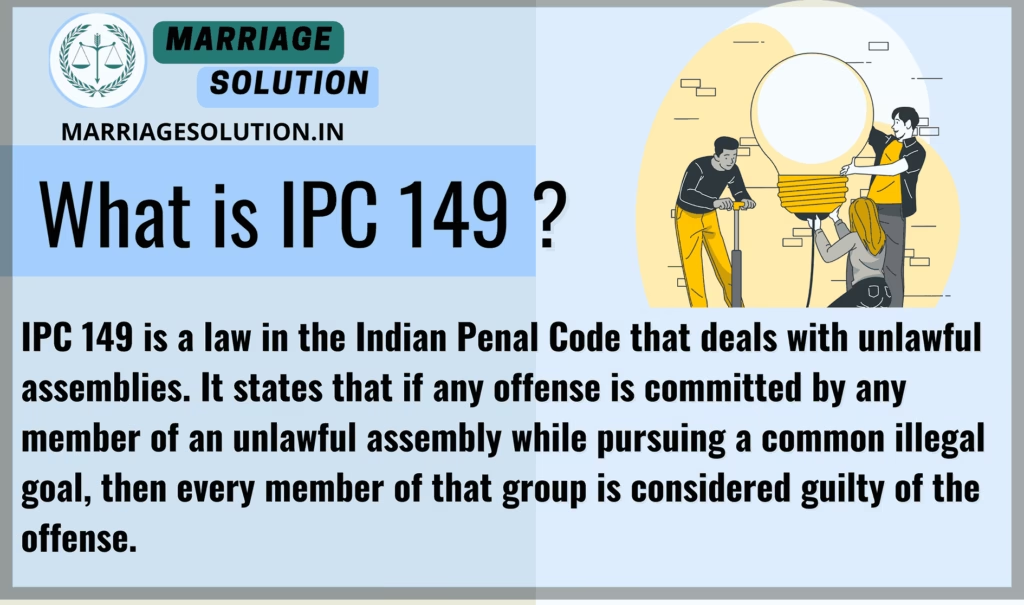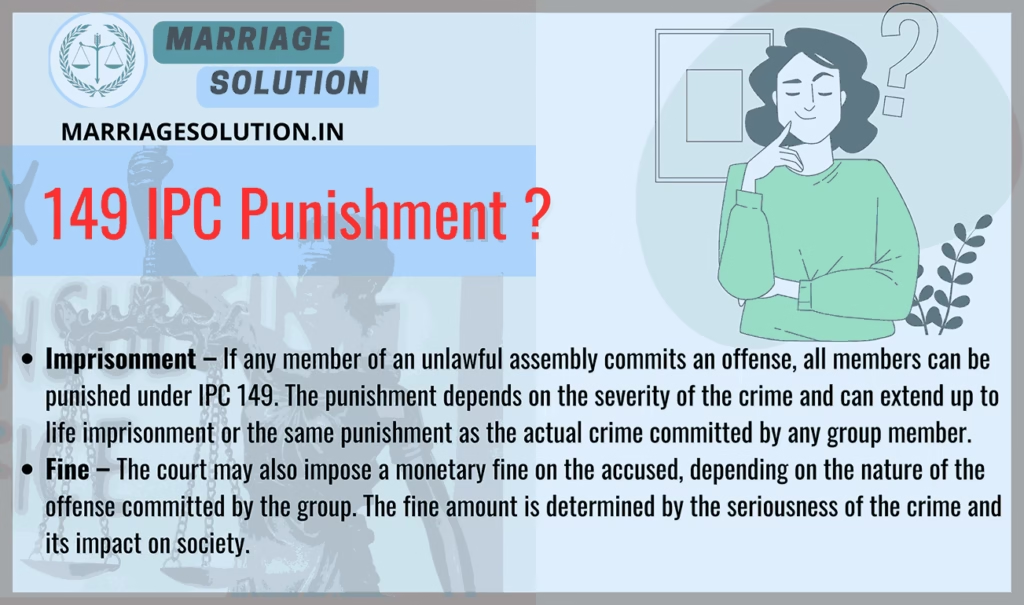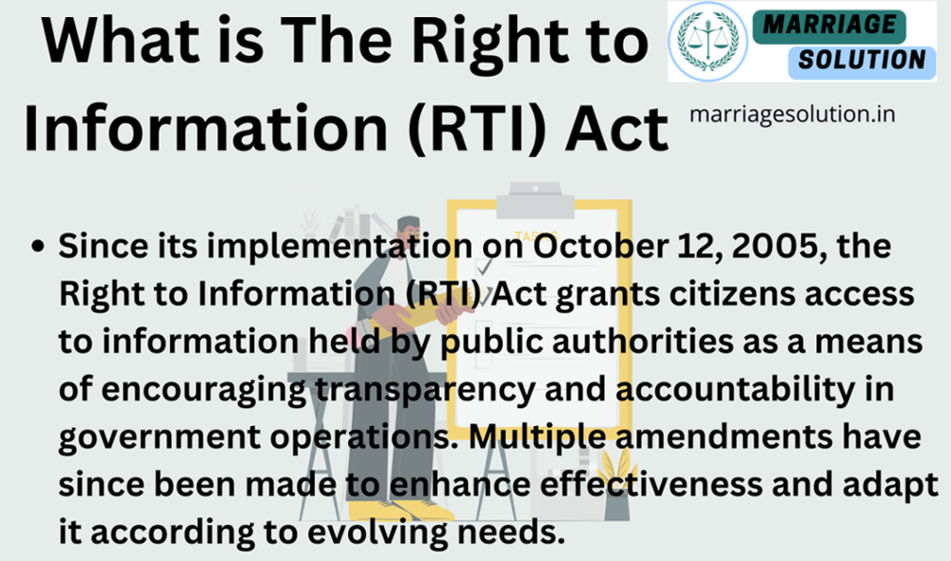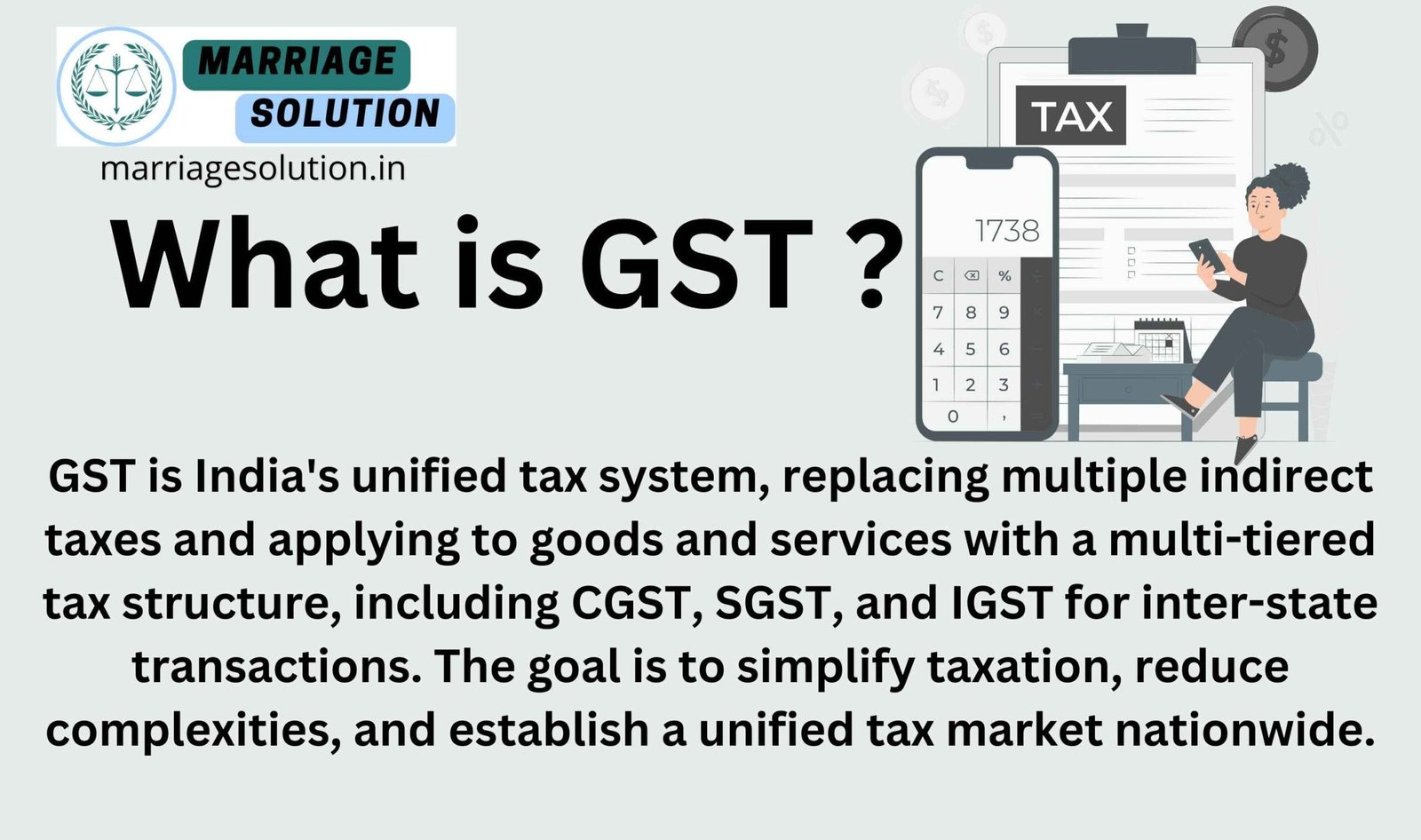Introduction of 149 IPC
149 IPC the Indian Penal Code (IPC) addresses the issue of unlawful assembly. This law holds every member of an unlawful assembly responsible for any offense committed by the group. Even if a person did not actively participate in the crime, being part of the group makes them equally liable. IPC 149 is crucial for maintaining public order by discouraging individuals from joining unlawful assemblies and ensuring that group actions are collectively punished.
- Introduction of 149 IPC
- What is IPC Section 149 ?
- IPC Section 149 Overview
- IPC 149 Punishment
- 149 IPC bailable or not ?
- Section 149 IPC case laws
- Section 149 IPC in short information
- 149 IPC FAQs
- If you need support with court proceedings or any other legal matters, don’t hesitate to reach out for assistance.
What is IPC Section 149 ?
IPC 149 is a law in the Indian Penal Code that deals with unlawful assemblies. It states that if any offense is committed by any member of an unlawful assembly while pursuing a common illegal goal, then every member of that group is considered guilty of the offense.

Section 149 IPC in Simple Points
5 Key Points of IPC 149
1. Holding Every Member Responsible
IPC 149 states that if any person in an unlawful assembly commits a crime, all members of the group will be held responsible. This means even if a person did not directly commit the crime, they can still be punished because they were part of the group that planned or supported it.
2. Definition of Unlawful Assembly
An unlawful assembly is a group of five or more people gathered with a common goal to break the law. If their actions disturb public peace, threaten safety, or harm others, they are considered unlawful. This section ensures such groups do not escape punishment.
3. Common Object Rule
The law focuses on the common object of the group. If the crime was committed to achieve the group’s illegal goal, every member is considered guilty, even if they personally did not commit any act of violence. Knowing about the crime and still staying with the group is enough for punishment.
4. Deterrence Against Group Crimes
IPC 149 acts as a strong deterrent against unlawful assemblies and riots. By making all members accountable, it discourages people from joining or supporting violent gatherings. This law helps control mob violence and maintain public order.
5. Punishment Based on the Main Crime
The punishment under IPC 149 depends on the severity of the offense committed by the group. If the unlawful assembly commits murder, the punishment is life imprisonment or the death penalty. If it involves minor violence, the punishment can be a few months in jail or a fine. The court decides punishment based on the gravity of the crime.
IPC Section 149 Overview
IPC Section 149 is a legal provision that punishes all members of an unlawful assembly if any one of them commits a crime in pursuit of the group’s common illegal objective. This law is based on collective liability, meaning that even if a person did not directly participate in the crime, they can still be held responsible if they were part of the unlawful assembly.
10 Key Points of IPC 149 (Explained in Detail)
1. Meaning of Unlawful Assembly
An unlawful assembly is a gathering of five or more people with a common illegal purpose. This means:
- The group must have an intent to commit an illegal act (e.g., violence, destruction, or public disturbance).
- Even if the group gathers peacefully at first, it can become unlawful if its purpose turns illegal (e.g., if they decide to commit a crime together).
- Example: If five people come together to vandalize property, the group is considered an unlawful assembly, and IPC 149 can be applied.
This provision helps control riots, mob violence, and organized crimes, ensuring that such unlawful gatherings do not take place.
2. Collective Responsibility for Group Crimes
The key principle of IPC 149 is collective responsibility. This means that if one person in the unlawful assembly commits a crime, all members of the group will be held equally responsible.
- This rule prevents criminals from escaping punishment by claiming they did not personally commit the offense.
- Even if a person only encouraged the crime or was present without taking action, they can still be punished under IPC 149.
- Example: If a group attacks a police station and only one member throws a petrol bomb, all five members can be punished for the attack.
This ensures that no one can escape legal consequences just because they were not physically involved in the crime.
3. Common Object – The Key Factor
IPC 149 applies only when a crime is committed in pursuit of the “common object” of the unlawful assembly. The “common object” means the shared illegal purpose of the group.
- If the crime was committed to fulfill the group’s common goal, then all members will be punished equally.
- Example: If a group gathers to burn a public bus, and one member actually sets fire to the bus, all members can be punished for arson because it was their common objective.
This law ensures that people cannot join unlawful groups and later deny responsibility when a crime happens.
4. No Need for Active Participation
Under IPC 149, a person does not need to physically commit the crime to be held guilty. Simply being part of the unlawful assembly is enough.
- Even if a person stood silently, they can still be punished under IPC 149 if they were present when the crime happened.
- Example: If a mob attacks a shop and a person stands nearby watching but does not stop them, they can still be held responsible under IPC 149.
This rule is designed to prevent people from supporting or encouraging crimes by being part of unlawful groups.
5. Harsh Legal Consequences
Since IPC 149 imposes collective punishment, it often results in harsh legal penalties for all members of the assembly.
- If a murder occurs during an unlawful assembly, all members can be charged with murder, even if only one person actually committed it.
- This ensures that no one escapes responsibility by saying they were “just present” at the crime scene.
- The punishment depends on the severity of the crime committed by any member of the group.
This law prevents criminals from escaping justice by claiming they were not directly involved in the offense.
6. Deterrence – Preventing Group Crimes
IPC 149 is a preventive law, meaning it aims to stop crimes before they happen by discouraging people from joining unlawful assemblies.
- People will think twice before joining violent groups, knowing that they can be punished even if they don’t commit the crime.
- Example: If a political rally turns violent, everyone in the group can be charged under IPC 149, which discourages people from engaging in riots and mob violence.
By deterring large-scale violence, this law helps maintain law and order in society.
7. Court Judgments and Legal Precedents
Indian courts have consistently upheld IPC 149, reinforcing its importance in preventing mob crimes.
- The Supreme Court has ruled that mere presence in an unlawful assembly is enough for conviction under IPC 149.
- Many landmark cases have confirmed that all members of an unlawful assembly share equal responsibility, regardless of individual actions.
This ensures that no loopholes exist for criminals to escape punishment under this law.
8. Proving Knowledge and Intent
To be convicted under IPC 149, the prosecution must prove that:
- The accused was aware of the common object of the group.
- The accused willingly participated in the unlawful assembly.
If a person can prove they were forced to be part of the group or did not know the group’s illegal plans, they may not be held guilty. However, such defenses are rarely accepted in court.
9. Limited Exceptions to Liability
Although IPC 149 is strict, there are some exceptions:
- If a person can prove that they had no knowledge of the group’s unlawful intentions, they may not be held responsible.
- Example: If a person accidentally joins a gathering and later realizes that it is an unlawful assembly, they can try to prove their innocence.
However, the burden of proving innocence is very high, and courts usually hold all members responsible unless clear evidence shows otherwise.
10. Connection with Other Laws
IPC 149 works alongside other sections related to unlawful assembly and riots, such as:
- IPC 141 – Definition of Unlawful Assembly
- IPC 146 – Rioting
- IPC 147 – Punishment for Rioting
- IPC 120B – Criminal Conspiracy
These sections together form a strong legal framework to control public disturbances, group crimes, and violent protests.
Example 1: Riot at a Political Rally
A group of protesters turn violent during a political rally and attack police officers and destroy public property. Even though some members did not participate in the violence, they were part of the unlawful assembly. Under IPC 149, all members of the group can be punished, not just those who physically caused damage.
Example 2: Mob Lynching Incident
A mob gathers to attack a person suspected of a crime. Even if only a few people physically assault the victim, all members of the mob are held guilty under IPC 149 because they had a common object to harm the person. Even those who did not hit the victim but were present in support of the act can be punished.
149 IPC Punishment
Imprisonment – If any member of an unlawful assembly commits an offense, all members can be punished under IPC 149. The punishment depends on the severity of the crime and can extend up to life imprisonment or the same punishment as the actual crime committed by any group member.
Fine – The court may also impose a monetary fine on the accused, depending on the nature of the offense committed by the group. The fine amount is determined by the seriousness of the crime and its impact on society.

149 IPC bailable or not ?
The bailability of IPC 149 depends on the crime committed by the unlawful assembly.
- If the main offense is bailable, IPC 149 is also bailable.
- If the main offense is non-bailable, IPC 149 becomes non-bailable as well.
For example:
If the group commits murder or serious crimes, bail is not granted easily.
If the group commits minor offenses, the accused may get bail.
Section 149 IPC case laws
Case 1: Queen-Empress vs Narsang Pathabhai (1886)
- Background: In this early case, the accused were part of a group involved in an altercation leading to murder.
- Incident: The group attacked a victim with sticks and stones, resulting in his death.
- Common Object: The court found that the group had a common object to harm the victim.
- Conviction: All members were convicted under IPC 149, as their common object was established.
- Significance: This case set a precedent for interpreting “common object” in group crimes.
Case 2: Lalji vs State of U.P. (1989)
- Background: This case involved a group armed with weapons, attacking and killing individuals.
- Incident: The group attacked the victims during a communal riot.
- Common Object: The court ruled that the common object was to cause death or grievous injury.
- Conviction: All members were convicted under IPC 149, even those who did not physically attack.
- Significance: It reinforced the principle of vicarious liability for group members.
Case 3: State of Maharashtra vs Joseph Mingel Koli (2003)
- Background: This case involved a mob lynching due to a property dispute.
- Incident: The mob attacked and killed an individual accused of theft.
- Common Object: The court identified the common object as punishing the alleged thief.
- Conviction: All participants were convicted under IPC 149, regardless of their individual roles.
- Significance: Highlighted the role of mob mentality in criminal liability.
Case 4: Krishna Govind Patil vs State of Maharashtra (1963)
- Background: The case dealt with a political rally turning violent.
- Incident: The mob clashed with police, resulting in several injuries and deaths.
- Common Object: The common object was to resist police authority.
- Conviction: All rally participants were convicted under IPC 149.
- Significance: Emphasized accountability in politically charged riots.
Case 5: Masalti vs State of U.P. (1964)
- Background: A group dispute over land led to a violent clash.
- Incident: The group used firearms, leading to multiple deaths.
- Common Object: The court ruled the common object was to assert dominance over the land.
- Conviction: All members were convicted under IPC 149.
- Significance: Established the importance of intent and participation in group crimes.
Case 6: Kuldip Yadav vs State of Bihar (2011)
- Background: This case involved a communal riot with severe consequences.
- Incident: The group engaged in looting and arson, resulting in several deaths.
- Common Object: The common object was to intimidate and harm the other community.
- Conviction: All participants were convicted under IPC 149.
- Significance: Reinforced the communal aspect in interpreting common object.
Case 7: State of Punjab vs Sanjiv Kumar (2007)
- Background: A gang fight led to multiple injuries and deaths.
- Incident: The gang attacked another group with knives and sticks.
- Common Object: The common object was to overpower and harm the rival gang.
- Conviction: All gang members were convicted under IPC 149.
- Significance: Highlighted the use of IPC 149 in gang-related violence.
Case 8: Ramchandran vs State of Kerala (2000)
- Background: This case involved a village feud over water resources.
- Incident: The group attacked the opposing party, causing grievous injuries.
- Common Object: The court found the common object was to assert control over water resources.
- Conviction: All members were convicted under IPC 149.
- Significance: Demonstrated IPC 149’s applicability in rural disputes.
Case 9: State of Haryana vs Chandvir (1993)
- Background: This case involved a group resisting eviction.
- Incident: The group clashed with the police, resulting in injuries.
- Common Object: The common object was to resist eviction by force.
- Conviction: All participants were convicted under IPC 149.
- Significance: Showed the application of IPC 149 in resisting legal actions.
Case 10: Kanwarlal vs State of Madhya Pradesh (2002)
- Background: A family feud escalated into a group confrontation.
- Incident: The group attacked another family, causing serious injuries.
- Common Object: The common object was to inflict harm on the opposing family.
- Conviction: All involved were convicted under IPC 149.
- Significance: Emphasized familial conflicts and collective liability.
Section 149 IPC in short information
| IPC Section | Offense | Punishment | Bailable/Non-Bailable | Cognizable/Non-Cognizable | Trial By |
|---|---|---|---|---|---|
| IPC 149 | Being part of an unlawful assembly where a crime is committed | Same punishment as the actual crime committed by any member of the assembly | Depends on the main offense | Cognizable | As per the main offense (Session Court for serious crimes, Magistrate for minor offenses) |
149 IPC FAQs
What constitutes an unlawful assembly under IPC 149?
An unlawful assembly is a group of five or more people who come together with the intention of committing an illegal act or achieving a common illegal objective.
Does IPC 149 hold everyone in the group responsible, even if they didn’t commit the crime?
Yes, IPC 149 holds all members of the unlawful assembly responsible for crimes committed in pursuit of the group’s common illegal objective, even if they did not personally commit the crime.
Is IPC 149 a bailable offense?
No, IPC 149 is generally a non-bailable offense. This means that those arrested under this section do not have an automatic right to bail and must apply to the court, which will decide based on the seriousness of the offense.
What kind of punishments can be given under IPC 149?
Punishments under IPC 149 depend on the severity of the crime committed by the unlawful assembly. It can range from imprisonment (which could be for life or a specific number of years) to fines.
If you need support with court proceedings or any other legal matters, don’t hesitate to reach out for assistance.
Court or any other marriage-related issues, our https://marriagesolution.in/lawyer-help-1/ website may prove helpful. By completing our enquiry form and submitting it online, we can provide customized guidance to navigate through the process effectively. Don’t hesitate to contact us for personalized solutions; we are here to assist you whenever necessary!
Right to Information RTI act :Your Comprehensive Guide (Part 1)
The Right to Information (RTI) Act : Explore the essence of the Right to Information (RTI) Act through this symbolic image. The image features legal documents, emphasizing the importance of transparency and accountability in governance. The scales of justice represent…
What is Article 371 of Indian Constitution ?
Article 371 of the Indian Constitution grants special provisions to specific states and regions within India, addressing their unique historical, social, and cultural circumstances. These provisions aim to accommodate diverse needs and protect cultural identities within the constitutional framework.
Indian Labour law : Your Comprehensive Guide (Part 1)
The purpose of labour laws is to safeguard employees and guarantee equitable treatment at the workplace, encompassing aspects such as remuneration, security, and perks. These regulations establish a secure ambiance by imposing minimum wage requirements, ensuring factory safety measures are…
GST :Your Comprehensive Guide (Part 1 – Understanding the Basics)
The Goods and Services Tax (GST) is like a big change in how we pay taxes in India. It started on July 1, 2017, and it’s here to simplify things. Before GST, we had many different taxes, and it could…





